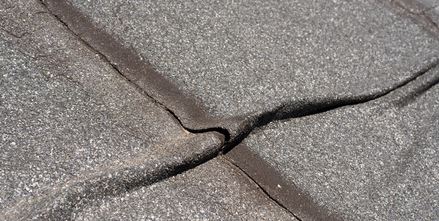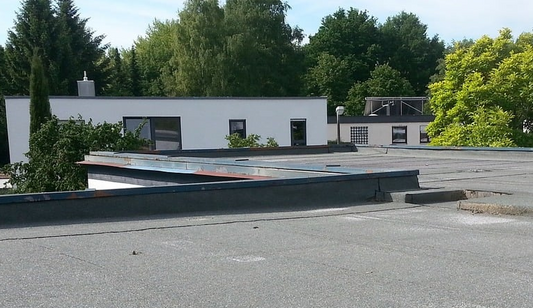As you consider GRP fibreglass roofing for your project, you likely have a list of questions running through your mind. You're not alone - many people wonder about the pros and cons of GRP roofing, whether it's possible to walk on it, and how to maintain it.
You might be curious about the recoating process, the importance of expansion joints, and the best boards to use. The good news is that you're about to get the answers you need. From understanding the advantages and disadvantages to maneuvering the installation and maintenance process, we'll cover it all - so let's get started and explore the world of GRP fibreglass roofing together.
What are the advantages of GRP roofing?
When it comes to choosing a roofing material, you'll find that GRP fibreglass roofing offers several benefits that set it apart from other options. One of the most significant advantages is its durability. GRP roofing is highly resistant to weather conditions, including heavy rain, hail, and extreme temperatures. This means you won't have to worry about frequent repairs or replacements, saving you time and money in the long run.
Another benefit of GRP fibreglass roofing is its lightweight nature, making it an ideal choice for buildings with weak structural integrity. It's also easy to install, which reduces labour costs and gets your project completed faster.
Additionally, GRP roofing is highly resistant to corrosion, ensuring it remains in good condition for years to come. You'll also appreciate its versatility, as it can be moulded to fit complex roof designs and shapes.
What are the disadvantages of grp roofing?
While GRP fibreglass roofing offers many advantages, considering its downsides is crucial, taking into account its high initial cost, which could pose a significant challenge for some homeowners. When contemplating GRP roofing for your property, it's vital to balance these drawbacks with its benefits.
Here are some key disadvantages to bear in mind:
- Higher initial investment: GRP roofing may come at a higher price compared to traditional roofing materials, which could be a notable factor for those with limited finances.
- Susceptible to scratches and damage: GRP roofs are prone to being easily scratched or damaged, potentially leading to water penetration and other concerns.
- Limited thermal efficiency: GRP roofing mightn't offer sufficient thermal insulation, potentially causing increased energy expenses and impacting the overall energy efficiency of your property.
- Calls for specialised installation: Installing GRP roofing requires specific expertise and tools, which could raise labor costs and installation duration.
- May not be suitable for intricate roofs: GRP roofing mightn't be the most suitable choice for intricate or curved roofs, as it can be challenging to set up and maintain.
Can you walk on a GRP flat roof?
You can walk on a GRP flat roof, but caution is necessary and it's important to follow specific guidelines to avoid damaging the surface. While GRP roofs are designed to be durable and resistant to wear and tear, they can still be prone to scratches, cracks, and other forms of damage if not handled with care.
When walking on a GRP flat roof, be sure to wear soft-soled shoes or boots with good grip to prevent slipping. Avoid wearing high heels or shoes with metal cleats, as these can cause punctures or scratches. It's also crucial to clean your shoes before walking on the roof to remove any dirt or debris that could scratch the surface.
Additionally, try to avoid walking on the roof during extreme weather conditions, such as heavy rain or snow, as this can make the surface slippery and increase the risk of accidents. If you need to perform maintenance or repairs on your GRP roof, it's recommended to use a ladder or scaffolding to minimize the amount of foot traffic on the roof.
Can you recoat a GRP roof?
GRP roofs can be recoated, but evaluating the condition of the current surface before applying a new coat is essential for achieving a successful and long-lasting outcome. You need to assess the roof's condition to determine if recoating is the best option or if a full replacement is required.
Before recoating, you should consider the following:
Cleanliness: Confirm the surface is free from dirt, oil, or other contaminants that may impact adhesion.
Damage: Inspect for cracks, blisters, or other damage that may need to be repaired before recoating.
Adhesion: Check if the old coat is still well-adhered to the substrate, as poor adhesion can lead to delamination.
Surface preparation: Prepare the surface according to the manufacturer's instructions to guarantee a strong bond between the old and new coats.
Compatibility: Verify that the new coat is compatible with the existing material to prevent any adverse reactions.
How long does it take for GRP to cure?
Depending on the specific product and environmental conditions, the curing time for GRP fibreglass roofing can vary substantially. Generally, you can expect the initial cure to take around 24 hours, depending on the temperature and humidity.
However, it's vital to wait for the full cure, which can take anywhere from 3 to 7 days, before exposing the roof to heavy rain or foot traffic.
During this time, it's important to keep the roof clean and dry to guarantee a proper bond between the GRP layers. You should also avoid applying any additional coatings or sealants until the full cure is complete.
If you're unsure about the curing time for your specific product, it's always best to consult the manufacturer's instructions or seek advice from a professional installer.
Can you jet wash a GRP roof?
After allowing the GRP fibreglass roofing to fully cure, it's crucial to wonder about its maintenance, and one common question that arises is whether it's safe to use a jet wash on the roof. You might think that a powerful jet wash would be an effective way to clean your GRP roof, but it's actually not recommended.
Using a jet wash on your GRP roof can cause more harm than good. Here are some reasons why:
Damage to the gel coat: The high-pressure jet wash can harm the gel coat, which is the top layer of your GRP roof. This can lead to cracks and fading.
Removal of sealants: The potent jet wash can dislodge and eliminate sealants around vents, skylights, and other roof features.
Loosening of fixings: The force of the jet wash can loosen fixings, edge trims and fasteners, compromising the structural integrity of your roof.
Risk of water ingress: Using a jet wash can push water into the roof's substrate, leading to water ingress and potential leaks.
Voiding the warranty: Using a jet wash on your GRP roof may nullify your warranty, so it's crucial to check with the manufacturer before attempting to clean your roof.
It's best to stick to gentle cleaning methods, such as soft-bristled brushes and mild detergents, to keep your GRP roof in good condition.
How long does a GRP roof last?
With proper setup and regular upkeep, you can expect your fibreglass roof to provide decades of dependable service. The lifespan of a GRP roof can vary depending on factors such as the quality of the materials, the skill of the installer, and the level of maintenance you perform.
On average, a well-maintained GRP roof can last for 20 to 30 years or more.
You'll be pleased to know that GRP roofs are incredibly durable and can withstand harsh weather conditions, including heavy rainfall, strong winds, and UV exposure. They're also resistant to corrosion and can maintain their integrity even in coastal or industrial environments.
Regular inspections and maintenance are essential to extending the life of your GRP roof. This includes cleaning the roof to remove debris, checking for signs of damage, and addressing any issues promptly.
How long does a GRP roof take to install?
You can typically expect a GRP roof installation to take anywhere from a few days to a few weeks, given the complexity of the project and the number of installers working on it. The duration of the installation process depends on several factors, including the size of your roof, the number of layers required, and the experience of the installation team.
Here are some key factors that can influence the installation time:
- Roof size: Larger roofs require more materials and labor, increasing the installation time.
- Number of layers: If you're replacing an existing roof, you may need to remove the old layers, which can add to the overall installation time.
- Complexity of the design: Unusual shapes, curves, or angles can require more time and effort to install.
- Weather conditions: Inclement weather, such as heavy rain or strong winds, can slow down the installation process.
- Installer's experience: A team with extensive experience in GRP roof installation can work more efficiently and complete the job faster.
What maintenance does a GRP roof need?
Your GRP roof requires minimal maintenance to ensure its longevity and performance. You'll be pleased to know that it's a low-maintenance option compared to traditional roofing materials.
To keep your GRP roof in top condition, you should inspect it regularly for signs of damage or debris. Check the roof's surface for any loose or missing aggregates, and make sure the drainage system is clear of leaves and other obstructions.
You should also clean your GRP roof periodically to remove dirt and grime that can affect its appearance and performance. A mild detergent and water are all you need to keep your roof looking like new. Avoid using harsh chemicals or abrasive cleaners, as they can damage the GRP material.
In addition to regular inspections and cleaning, you should also keep an eye out for any signs of wear around flashing, vents, and other roof penetrations. If you notice any issues, it's crucial to address them promptly to prevent water ingress and other problems.
Do GRP's roof's crack?
Durability concerns often surround GRP fibreglass flat roofing, and one common question is whether they're prone to cracking. You might wonder if your GRP roof will develop cracks over time, compromising its waterproofing and overall performance.
The good news is that GRP roofs are designed to be durable and resistant to cracking.
However, it's important to note that GRP roofs can crack under certain circumstances. Here are some scenarios where cracking might occur:
- Poor installation: If the GRP roof isn't installed correctly, it may be more prone to cracking.
- Extreme weather conditions: Severe weather events, such as hurricanes or tornadoes, can cause damage to the roof.
- Foot traffic: If the roof is subjected to heavy foot traffic, it may lead to cracking.
- Age: Like any material, GRP roofs can deteriorate over time, increasing the risk of cracking.
- Poor maintenance: Failure to maintain the roof properly can lead to cracks and other damage.
It's necessary to work with a reputable installer and maintain your GRP roof regularly to minimize the risk of cracking.
Can you apply GRP fibreglass over an existing flat roof?
When considering a GRP fibreglass roofing solution, a common question is whether it can be applied directly over an existing flat roof, saving time and hassle. The answer is yes, but with some caveats. You'll need to assess the condition of your existing roof to verify it's suitable for a GRP overlay. If your current roof is in poor condition, with significant cracks, blisters, or water damage, it's best to replace it entirely before applying a GRP fibreglass layer.
However, if your existing roof is in relatively good condition, you can apply a GRP fibreglass layer directly over it. This can save you time and money on removal and disposal costs. Additionally, a GRP overlay can prolong the life of your existing roof, providing an extra layer of protection against the elements.
Before applying the GRP layer, you'll need to confirm the existing roof is clean, dry, and free of any debris or obstacles. A professional installer will then apply a specialized bonding agent to the existing roof, followed by the GRP fibreglass layer. With proper installation, a GRP overlay can offer a durable and long-lasting roofing solution.
How do you stop condensation on a fibreglass roof?
To minimize the risk of condensation on a fibreglass roof, it's vital to maintain adequate ventilation and airflow around the roof's surface. You can achieve this by making sure that your roof's design includes features that promote airflow, such as ventilation ridges or extractor fans.
Here are some additional tips to help you prevent condensation on your fibreglass roof:
- Ensure proper installation: Confirm that your fibreglass roof is installed correctly, with a suitable underlay and a smooth, even finish.
- Use a breathable membrane: Install a breathable membrane beneath your fibreglass roof to allow moisture to escape.
- Improve air circulation: Guarantee good air circulation in the space below your roof by installing vents or air bricks.
- Reduce humidity: Maintain the space below your roof well-ventilated and dry to decrease humidity levels.
- Regularly inspect and maintain: Routinely inspect your roof for signs of condensation and address any issues promptly to prevent damage.
Do you need expansion joints in GRP roof?
Expansion joints are a critical aspect in GRP roof design, as they allow for the natural thermal expansion and contraction of the material, preventing cracks and damage. You'll need to take into account the roof's size, shape, and material thickness when deciding where to place expansion joints.
Generally, it's crucial to have an expansion joint every 10-15 meters, but this may vary depending on your specific roof design.
If you're constructing a small roof, you mightn't require expansion joints at all. However, for larger roofs, including them is vital to avoid material failure. You should also take into account the roof's orientation and exposure to sunlight, as these factors can impact the material's thermal expansion.
When installing expansion joints, it's essential to adhere to the manufacturer's guidelines and use the recommended materials. Typically, you'll need to install a flexible sealant, such as a polyurethane-based sealant, to allow for movement while maintaining the joint watertight.
What boards to use for a GRP roof?
You'll need to choose the right boards for your GRP roof, as they provide the foundation for the entire system, and selecting the wrong ones can compromise its performance. The boards you select will impact the durability, water resistance, and overall lifespan of your roof.
Here are some key factors to take into account:
OSB3 (Oriented Strand Board): A popular choice for GRP roofs, OSB3 is water-resistant and durable.
Plywood: A cost-effective option, plywood is suitable for GRP roofs, but it may require additional treatment for water resistance.
Toughened plywood: A more durable option than regular plywood, toughened plywood is less prone to water damage.
Cement-based boards: Ideal for areas with high humidity or exposure to water, cement-based boards provide excellent water resistance.
Insulated boards: If you're looking for added thermal insulation, think about using insulated boards that combine a board with insulation material.
Remember to always follow the manufacturer's instructions and guidelines for preparing the boards for your GRP roof. By selecting the right boards, you'll establish a strong foundation for your roofing system.
How long between fibreglass and top coat?
Your fibreglass laminate needs time to fully cure before applying the top coat, and the waiting period depends on various factors, including the ambient temperature and humidity. Typically, you'll need to wait at least 24 hours in ideal conditions, but this can extend to several days or even weeks in cooler or more humid environments. It's crucial to follow the manufacturer's instructions for the specific products you're using, as they may have specific guidelines for curing times.
You can check if the laminate is ready for the top coat by performing a simple test. Gently press your thumb onto the surface; if it feels soft or tacky, it isn't yet fully cured. If it feels hard and dry, you're good to go.
Keep in mind that applying the top coat too soon can compromise the adhesion and overall performance of your GRP roof.
Remember to also consider the thickness of the laminate and the type of top coat you're using. Thicker laminates may require longer curing times, while certain top coats may have specific requirements for application. Always err on the side of caution and wait a bit longer if you're unsure.
(GRP fibreglass roofing kits are ideal for getting all the correct materials for your project)
How many layers are on a GRP roof?
When considering a GRP fibreglass roof, you're probably wondering how many layers it consists of. Typically, a GRP roof consists of three primary layers: the osmosis-resistant barrier, the fibreglass laminate, and the top coat. But that's not all - there are additional layers that work together to provide a durable and long-lasting roofing solution.
Here are the key layers that make up a GRP roof:
Osmosis-resistant barrier: A protective layer that prevents water from penetrating the roof
Fibreglass laminate: A strong, flexible layer that provides structural integrity
Top coat: A weather-resistant layer that protects the roof from UV rays and weathering
Primer: A bonding agent that guarantees a strong adhesion between layers
Finish coat: A final layer that provides a decorative finish and additional protection
These layers work together to provide a robust and reliable roofing solution. By understanding the different layers that make up a GRP roof, you can have confidence in its capability to protect your building from the elements.
Final Words
You've got the answers to your GRP fibreglass roofing questions!
From understanding the advantages and disadvantages to knowing the installation process and maintenance requirements, you're now equipped to make an informed decision.
Whether you're a homeowner or a contractor, you can confidently choose GRP roofing for its durability, weather-resistance, and cost-effectiveness.
With proper installation and maintenance, a GRP roof will provide years of reliable service.




